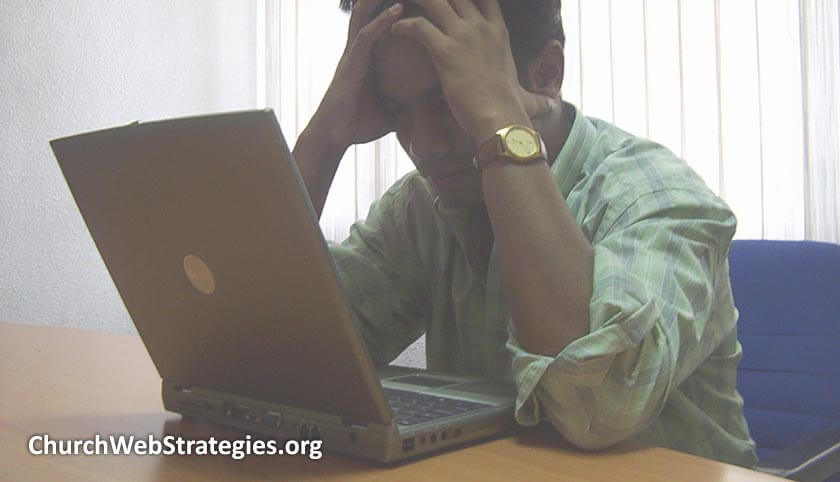How does the church respond when calamity strikes, be it in their neighborhood, or around the world? When people are grieving, they often turn to the church for support; seeking refuge in God’s love. Is your website readily equipped to offer this comfort and do you have a social media policies to help govern your responses in that space? If there is any doubt, read on.
The largest spike in church attendance across the nation occurred the weekend after the terrorist attacks of 9/11. It was apparent that many Americans turn toward the comfort of the church deal with tragedy. It makes a lot of sense, as we have trained counselors and (hopefully) a community that is willing to come around families in their times of need. In an effort to integrate your offline and online activities, I offer the following ideas:
Social Content
Write pieces of content for your website that are meant to be shared via your various social media channels. These should only be a paragraph or two long. They can be a combination of official statements, requests for prayer, provide a prayer others can pray, and related scripture references. The primary calls to action would be to further share the page on various social media channels your visitors are on. Secondary actions would be links to counseling services or any special service times. On a side topic, you should also consider how your pastors and paid staff should handle these social interactions via social media policies.
Connect to Help
Although this was a secondary call to action, it easily embedded on the site. It can be called out as a link at the bottom of one of the above mentioned posts. Additionally, it can be linked from within the content “Extra volunteers have stepped up to serve in our counseling groups to help the community deal with this tragedy”. As you can see, it is easy to add contextual links to your writing. Hopefully these links within your content can direct people to the support they need, and can aid in your site’s internal link strategy.
Encourage Community
The real magic of the church happens in small groups and communities. See where you can create sign-up forms and post information about the formation of these groups in the wake of a hardship. It can form a common bond that initially unites the group. I would encourage you to create groups with a mix of Christians and non-Christians. Walking through life, meeting regularly to share, and loving each other through the pain can be just one way we can show Jesus’ unconditional love. Perhaps a microsite could be the solution, so it is connected to your church, but has a different branding and address that might otherwise be an obstacle to non-Christians.
Action Item
Find ways to reach out to communities, people groups, or specific types of victims. See how you can become known via social media channels. Construct pages that have clear calls to action. Connect those calls to actions to relationships; be it personal responses via Twitter, email, phone calls, meeting for coffee, or a community group meeting. Look for the broken people that are all around us, and show them the same love Christ showed all of us.
Note: This article was inspired by several tragedies in my own life in the spring of 2013. The suicide of my friend, Joshua Waters, made me want to reach out to friends and make sense of life’s pain. The tornadoes in Oklahoma, where I lived for three years, reminded me of how the church must to step in to help in the midst of chaos. The great sermon by Doug Melder on suffering gave me the conviction I needed to ask churches again to reach out to those in pain with their websites.
Photo courtesy of Rajesh Sundaram


Comments are closed.